Do you see yourself as a healer? Do you want to help people recover from severe injuries and illnesses by working with them on physical therapy? If so, becoming a physical therapist assistant may be the perfect career. New grads have lots of options when it comes to job hunting after graduation. You could work in an unrelated field that interests you or do something directly related to your degree. The decision is up to you, but no matter which route you choose, there will be some challenges as you try to break into the world of work. Your resume is one of the first things HR professionals see when screening applicants, so making sure yours stands out from the crowd is essential. A well-written resume can give you a leg up in any job search because it emphasizes your best attributes and gives the hiring manager what they need to know about how your skills align with their needs.
Physical Therapist Resume Example
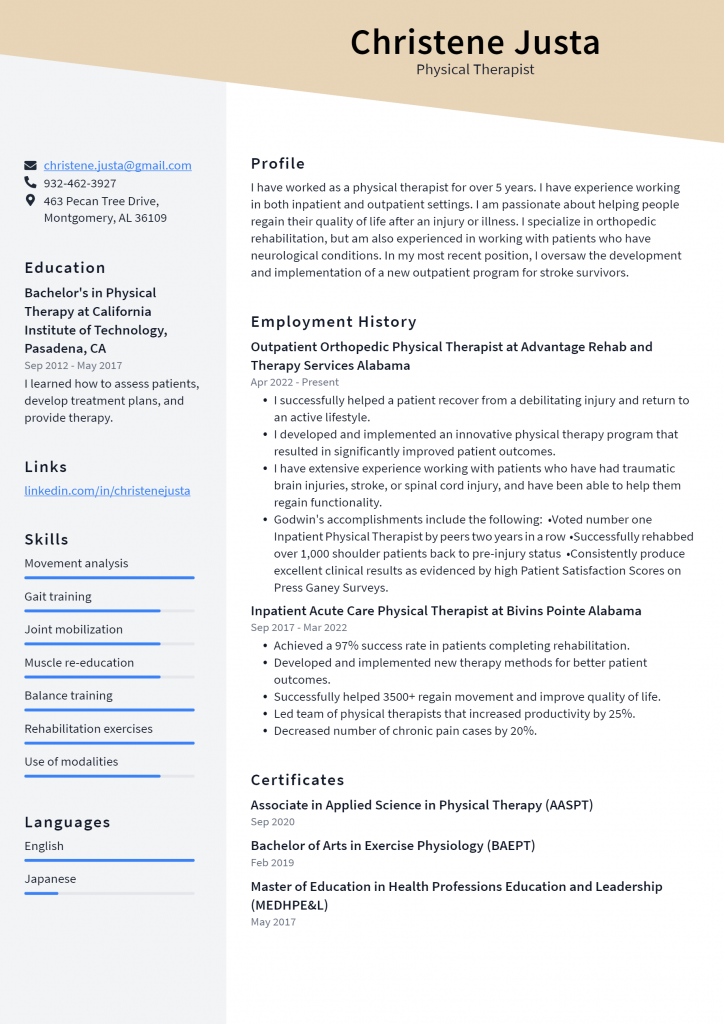
Download This Physical Therapist Resume as PDF
Occupational Therapist Assistant Resume Example

Download This Occupational Therapist Assistant Resume as PDF
Physical Therapist Assistant Resume Example

Download This Physical Therapist Assistant Resume as PDF
Registered Occupational Therapist Resume Example
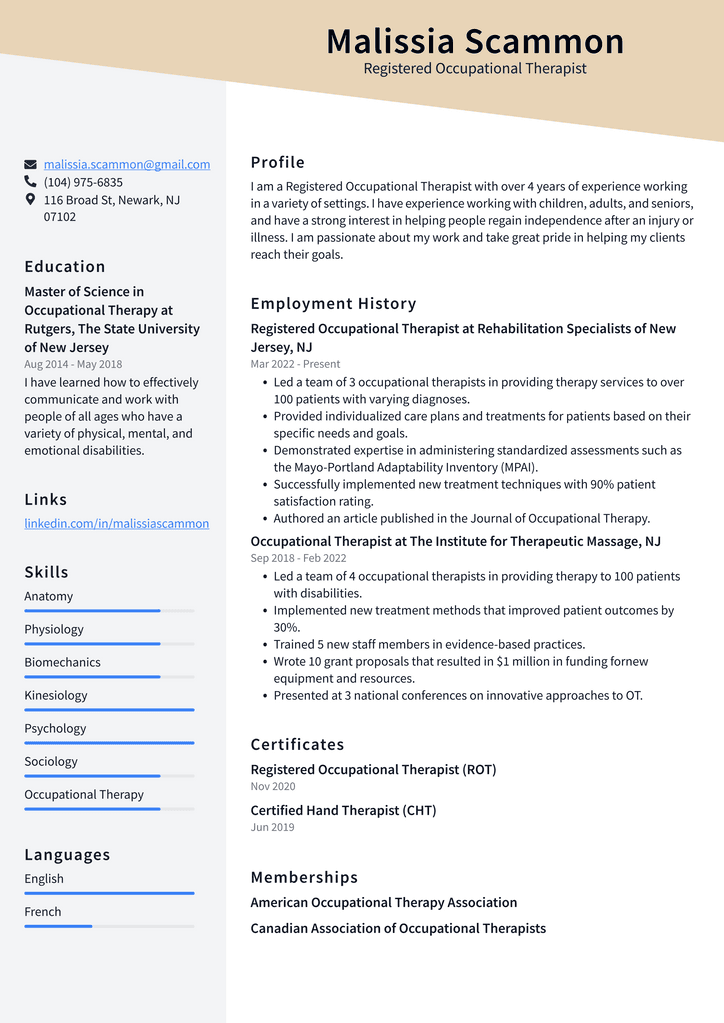
Download This Registered Occupational Therapist Resume as PDF
Licensed Occupational Therapist Resume Example
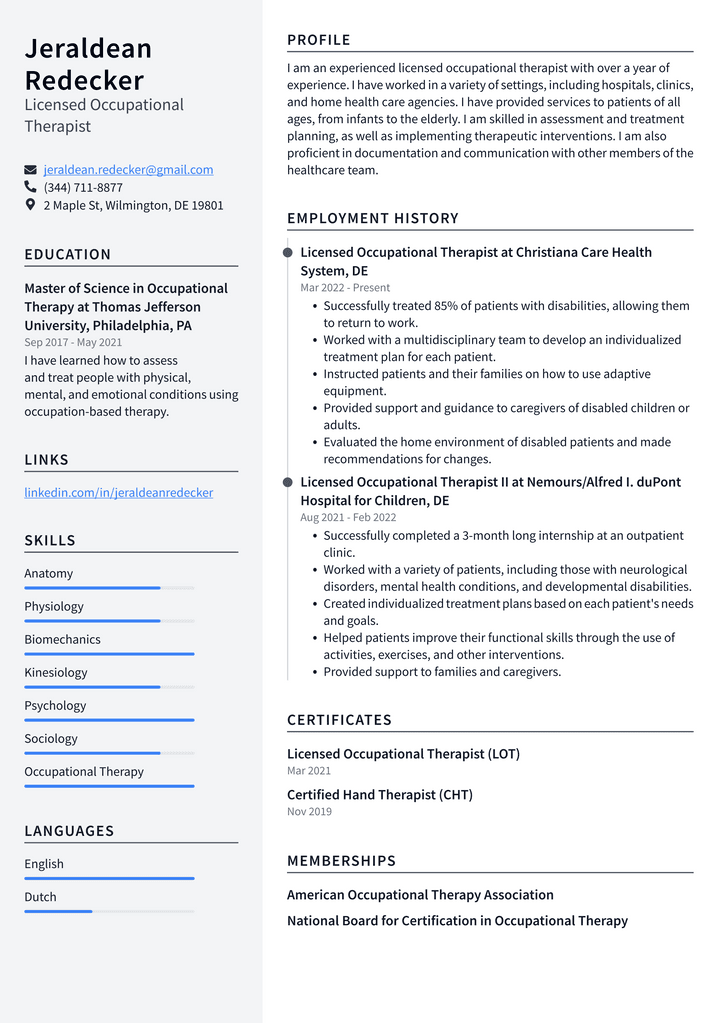
Download This Licensed Occupational Therapist Resume as PDF
Certified Occupational Therapy Assistant Resume Example
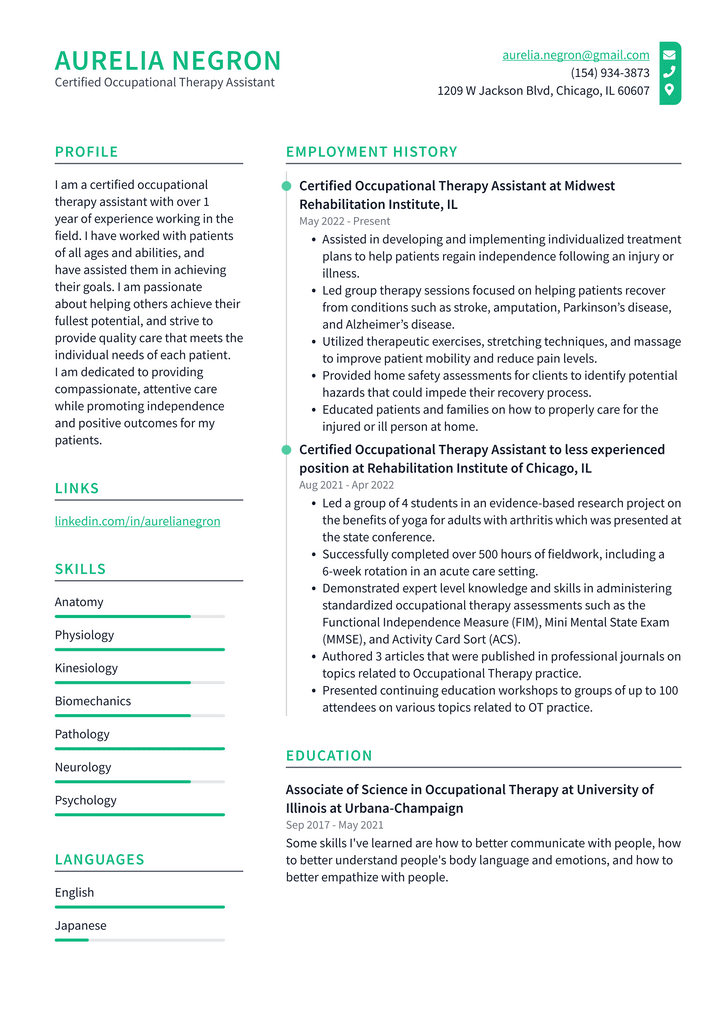
Download This Certified Occupational Therapy Assistant Resume as PDF
Occupational Therapist Resume Example
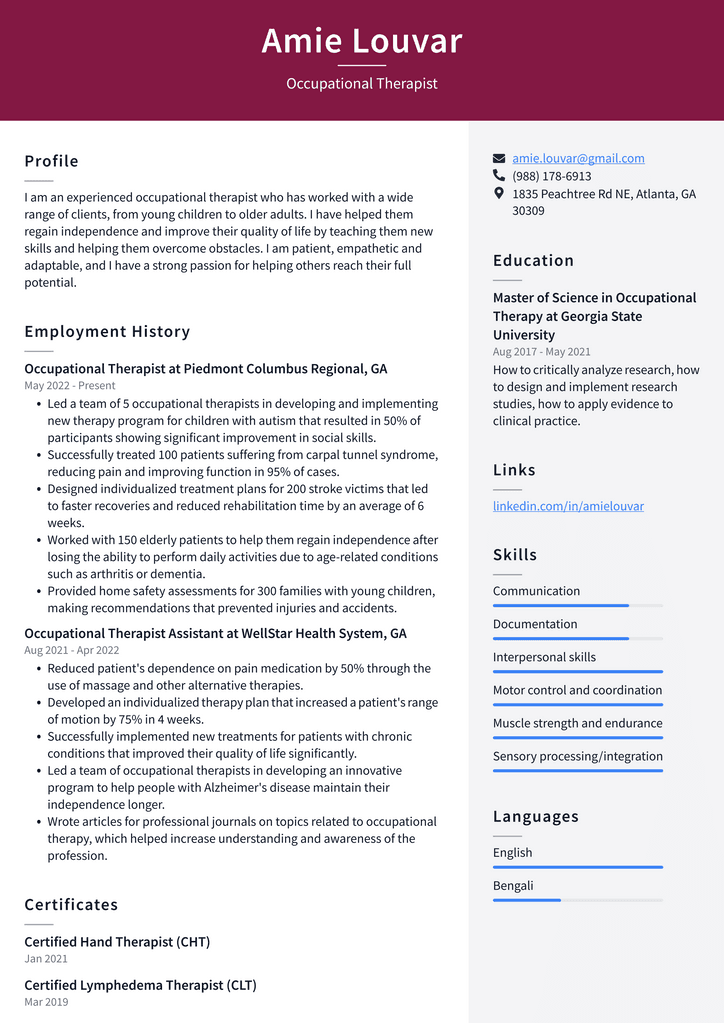
Download This Occupational Therapist Resume as PDF
Step 1: Know the Assisted Physical Therapy Role
Physical therapists work with clients who have physical injuries or illnesses that inhibit their movements, such as those who have had an injury or surgery to their spinal column, broken bones, or mobility issues resulting from being obese. They work with patients to help them regain mobility, ease pain, and get back to their daily activities. In many cases, physical therapy involves a lot of hands-on treatment, such as stretching, massage, hot and cold therapy, and electrical stimulation. Physical therapist assistants help with some of these tasks, with the amount of hands-on care varying from one state or country to the next.
Step 2: Build Your Resume
A physical therapist assistant’s resume should feature your education, skills, and experience. People hiring PTA’s will want to know what classes you took and what projects you completed while in school. In addition, your coursework and extracurriculars will give them insight into your knowledge and abilities. A strong resume will also include your job experience. You might choose to organize your resume by listing the dates of your work history, followed by a summary of the tasks you completed while employed at each job. Or, you could opt for a skills-based resume, which highlights your abilities and credentials, regardless of your employment history.
Step 3: Write Your Cover Letter
The cover letter is your opportunity to go into more detail about why you are the best candidate for the job. You can expand on the information you put in your resume by highlighting relevant skills and explaining how you would use those skills in the role. For example, you might list “experience working with clients with mobility issues” in your resume. Still, your cover letter would allow you to go into further detail about your experience, explaining the types of clients you worked with, the types of injuries or illnesses you assisted with, and how you worked with them to help them recover.
Step 4: Build Your Network
Whether transitioning out of school or making a career change later in life, networking is essential to landing a job. It’s pretty much impossible to get a job without some contacts, either directly or indirectly. Of course, you could put up an ad on social media or Craigslist, but you’ll get a far better response if you ask people you know to pass your resume. It’s always helpful to make friends in the industry you hope to work in, and since you’re new to the workforce, building a network of contacts can be especially helpful. If you have friends or family members who work in the field, ask if they can put in a good word for you with their managers. You might also want to reach out to people in related industries. For example, if you’re interested in working in a hospital, but your degree is in nursing, you could still reach out to people in your field, but you may have to be a little more creative about how you approach them.
Final Thoughts
No matter what level of hands-on experience you have, you can use your resume to demonstrate your qualifications for the job. You can also use your resume to show how your skills could be valuable to the company. Therefore, you want to ensure your summary is as detailed as possible and includes all the skills and abilities you have that make you a strong candidate for the job. Your resume should also be well-written and easy to understand. Make sure that there are no grammar or spelling mistakes on your resume. It’s also a good idea to have someone else proofread your resume to ensure there are no mistakes. A detailed and well-written resume will help you get your foot in the door, regardless of which industry you’re trying to break into.